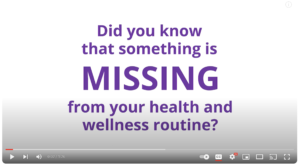
Cancer. The word alone carries a weight that can send shivers down anyone’s spine. But what if we told you that you have the power to be proactive in the fight against this formidable adversary? That’s right, early cancer detection is a crucial weapon in the arsenal against this disease, and it can be seamlessly integrated into your wellness program. Welcome to #SpotandSurvive, a comprehensive approach to early cancer detection that empowers you to take control of your health.
Step 1: Signs & Symptoms – Your First Line of Defense
The first step in the #SpotandSurvive approach is to familiarize yourself with the signs and symptoms of cancer. Knowing what to look for is your first line of defense. While it’s important to remember that these signs and symptoms can vary depending on the type of cancer, having a general understanding is invaluable.
Learn the Cancer Signs & Symptoms
A wealth of information on cancer signs and symptoms is just a click away. Take the time to educate yourself, and you’ll be better equipped to spot potential warning signs early on.
Step 2: Body Monitoring – Vigilance Beyond Doctor Visits
Cancer doesn’t take a break. It can grow 24/7, which means that between your regular doctor visits or screenings, you need to keep a vigilant eye on your body. But how do you do that effectively?
Learn How to Monitor Your Body
In this step, we’ll delve into the tools and methods that enable you to monitor your body for any abnormalities. From self-examinations to tracking changes, you’ll gain the knowledge you need to stay ahead of cancer.
Step 3: Family History – Your Genetic Roadmap
Your family’s medical history can be a valuable piece of the puzzle. Knowing and charting your family’s medical history, especially regarding cancer, can provide crucial insights into your risk factors.
Learn How to Chart Biological Family Cancer History
Discover how to create a comprehensive record of your family’s medical background. This information will not only assist you but also your medical team in developing a wellness program tailored to your unique needs.
Step 4: Your Medical Team – A Lifeline in the Battle
Cancer is not a foe to be tackled alone. When you spot a potential sign or symptom, it’s essential to consult your medical team promptly. Think of it as a red flag that requires immediate attention, whether it turns out to be cancer or another health issue.
Establish Your Medical Team
In this step, we’ll guide you on how to build a strong medical team that will be your partners in your wellness journey. From primary care physicians to specialists, each plays a vital role in your early detection and prevention efforts.
Step 5: Screening & Testing – The Crucial Checkpoints
While some cancer signs and symptoms are visible, others require specific screening and testing methods for detection. Establishing a routine schedule for these screenings and tests is paramount to your early cancer detection strategy.
Start a Screening & Testing Schedule
Learn when and how to schedule screenings and tests with your medical team. These checkpoints are essential for catching cancer in its earliest stages when it’s most treatable.
The Power of Early Detection
Incorporating early cancer detection into your wellness program through #SpotandSurvive is a proactive approach that can save lives. By understanding the signs and symptoms, monitoring your body, considering your family history, consulting your medical team, and adhering to a screening schedule, you’re taking control of your health and well-being.
Cancer is a formidable opponent, but with knowledge and early detection on your side, you can increase your chances of not just surviving but thriving. Your journey to a healthier, cancer-aware lifestyle starts here. Join us in the fight against cancer with #SpotandSurvive, because early detection can make all the difference.
Important Cancer Statistics
Survival Rate Improvement: When cancer is detected at an early, localized stage, the 5-year survival rate is often significantly higher, with many cancers having survival rates of 90% or higher.
Source: American Cancer Society, “Survival Rates for Common Cancers”
Breast Cancer: For localized breast cancer, where the cancer has not spread beyond the breast, the 5-year survival rate is about 99%.
Source: American Cancer Society, “Breast Cancer Survival Rates”
Colorectal Cancer: Colorectal cancer, when detected early, often at a localized stage, has a 5-year survival rate of approximately 90%.
Source: American Cancer Society, “Colorectal Cancer Survival Rates”
Lung Cancer: Lung cancer detected at an early, localized stage has a much higher 5-year survival rate of around 60%, compared to advanced stages where the survival rate is significantly lower.
Source: American Cancer Society, “Lung Cancer Survival Rates”
Prostate Cancer: Prostate cancer diagnosed at a localized stage has a 5-year survival rate of nearly 100%.
Source: American Cancer Society, “Prostate Cancer Survival Rates”
Cervical Cancer: The 5-year survival rate for cervical cancer is about 92% when it is diagnosed at the localized stage.
Source: American Cancer Society, “Cervical Cancer Survival Rates”
Note: This information is provided for educational purposes and should not replace professional medical advice. Always consult with your healthcare provider for any health-related concerns or questions.

